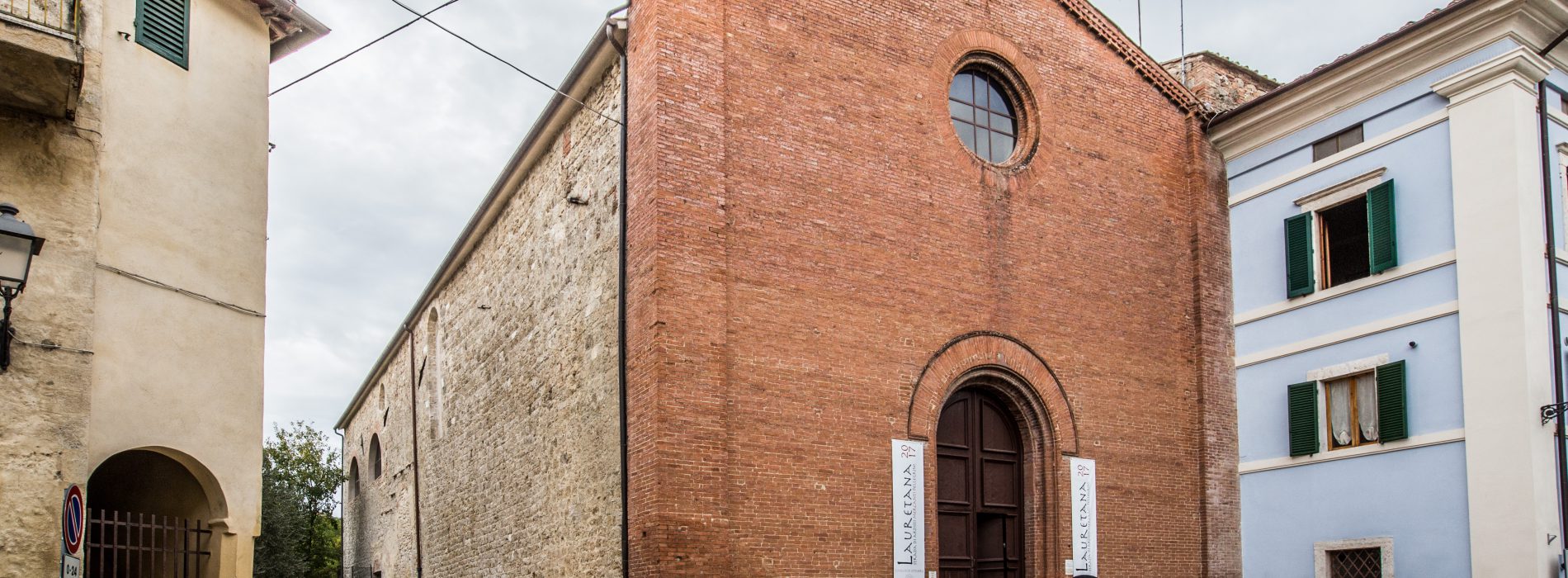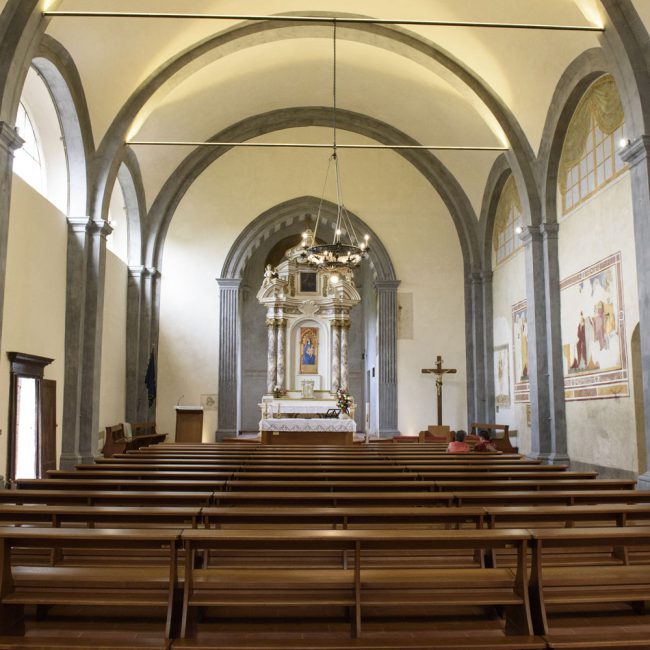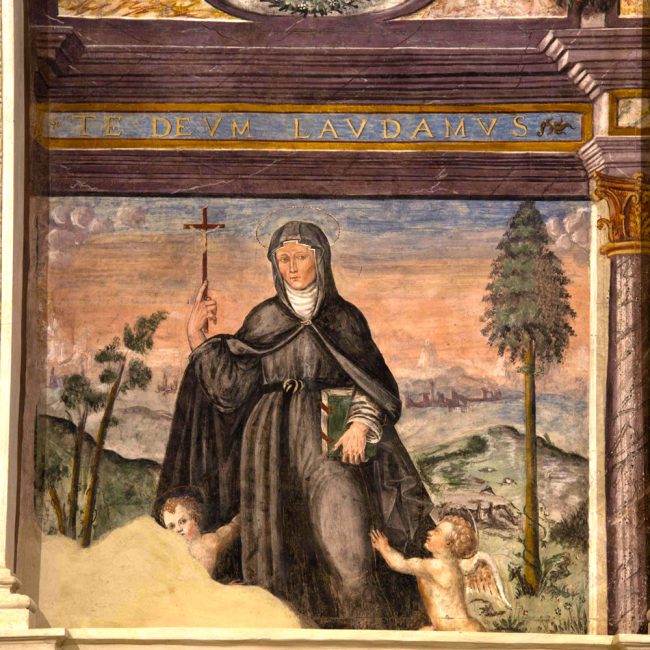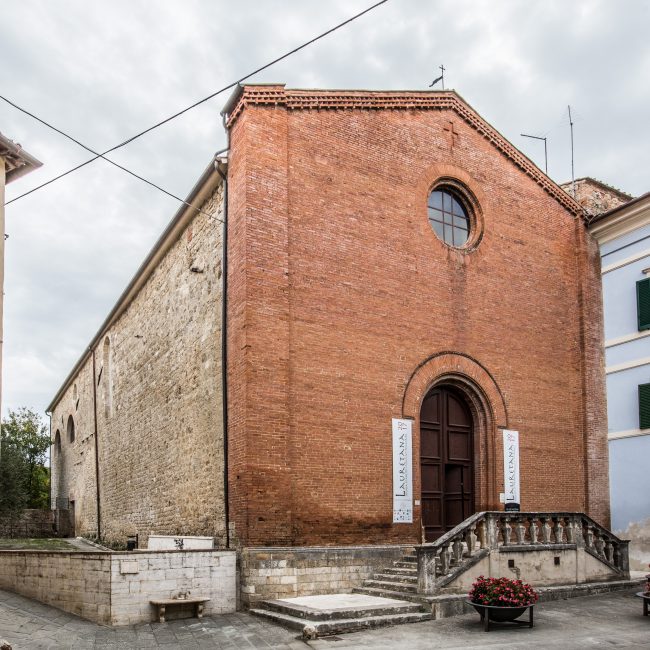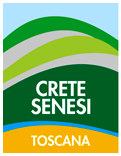Church of Sant’Agostino
The church, built starting from the 13th century, overlooks the main street that coincides with a section of the historic Via Lauretana, now Corso Matteotti. On its right, you can admire what remains of the old Augustinian convent, currently used as private residences.
Important works of art, now displayed in the Museum of Palazzo Corboli, originate from here.
History
The origins of this complex date back to the Middle Ages, with documents attesting to its presence as early as the 13th century. In 1332, some buildings were ceded by Bacco del Priore for the construction of the convent. By the mid-15th century, the S. Agostino complex enjoyed the patronage of the wealthy Sienese merchant Iacopo Scotti, who held rights to two chapels inside the church and whose coat of arms appears on the counter-facade. With the Napoleonic suppressions, S. Agostino was converted for private use and was purchased by the Vegni family, who donated it in 1857 to the Venerable Confraternity of Misericordia and S. Chiodo.
Architecture
This large church, formerly dedicated to St. Michael, features a single nave with a double-pitched roof. The structure, as seen externally on the side and in the apse area, was built with travertine; in the late medieval period, it was expanded and given a new brick facade, as evidenced by a brick near the entrance with the date “1472.” The expansion was likely financed by the wealthy merchant Iacopo Scotti, whose tombstone, created by Urbano da Cortona, can still be admired inside the church.
The convent, located on the right side of the church, consisted of rooms overlooking an inner courtyard with a well in the center.
Art
Inside the church, you can admire the beautiful frescoes rediscovered during recent restorations, featuring several figures of Saints (St. Catherine of Alexandria, St. Andrew, St. John the Baptist, St. Anthony Abbot, and St. Sebastian), and a remarkable St. Christopher, frescoed near the entrance, depicted crossing the waters while carrying the Baby Jesus on his shoulder. At the saint's feet, there is also a rare depiction of a two-tailed siren. The stuccoes are from the 17th century, while the trompe-l'oeil windows are 19th century.
Some of the most important works from this church are now displayed in the Museum of Palazzo Corboli, including:
- A carved wooden crucifix attributed to Giovanni Pisano (Pisa, ca. 1248–Siena, ca. 1315), dated around 1290. Once placed on the church's wooden pulpit, it demonstrates the master’s exceptional craftsmanship. The piece has a distinctly Gothic style, with a particular twist in the body and a refined expression in the face. The work profoundly touches the soul with its moving representation, where every carved detail tells a story of sorrow and hope.
- The altarpiece by Matteo di Giovanni (Borgo San Sepolcro, ca. 1425–1430–Siena, ca. 1497), depicting the Madonna enthroned with the Child and Saints James, Augustine, Bernardino, and Margaret. This majestic work, created for the merchant Iacopo Scotti, is rich in fine details, visible in the rendering of fabrics and materials. It is commonly known as the “Madonna delle Grazie,” as it was highly venerated by the community.
- The “astìle” cross (so named because it originally had a pole to be held for processions), recently attributed to Francesco d'Antonio (created shortly before his death in August 1470), was commissioned by the wealthy Sienese merchant Iacopo Scotti. Made from embossed and gilded copper, the cross is unfortunately damaged and missing some parts, such as the crucifix statue at the center. Despite this, its execution's refinement is still evident, showcasing the excellent skills of the artist, one of the greatest goldsmiths of the time.
Spirituality, worship, and traditions
The Church of Sant'Agostino is currently open for worship.
The church and the adjacent square are frequently involved in cultural events and traditional celebrations that enliven the community's life.
